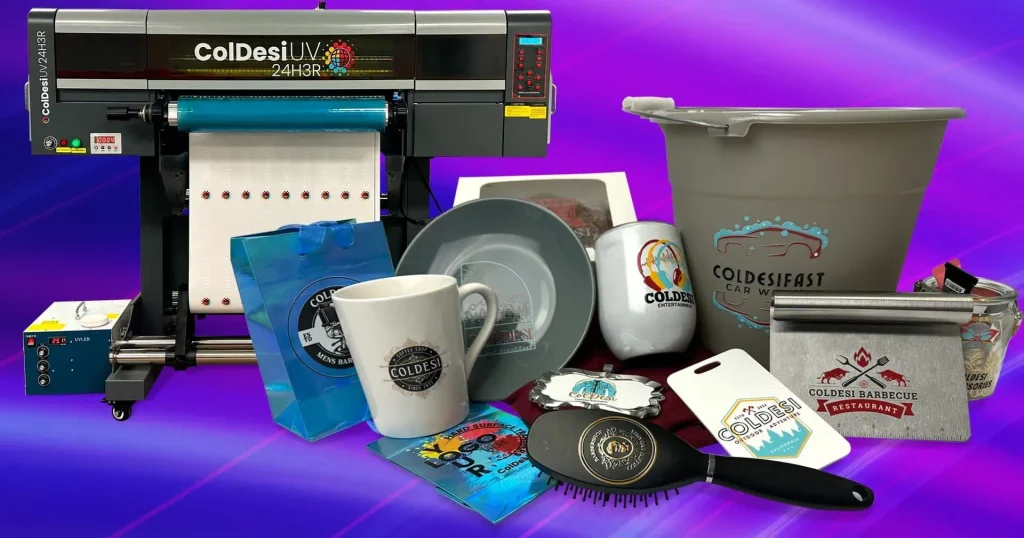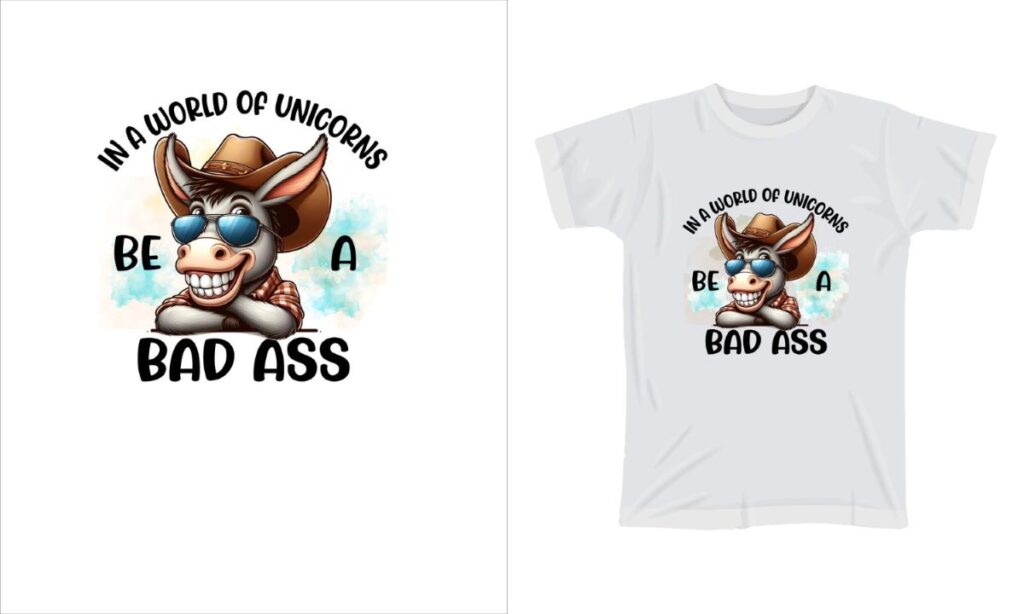UV DTF printing has emerged as a revolutionary technique in the world of printing, allowing for unparalleled precision and longevity in designs. This innovative method utilizes ultraviolet light to cure the inks, ensuring vibrant colors and striking details that captivate audiences. By delving into the nuances of UV DTF printing, businesses can unlock tremendous potential in their design capabilities, providing remarkable results that satisfy demanding customers. In this article, we will explore essential DTF printing tips, delve into the intricacies of UV printing optimization, and emphasize the importance of DTF film selection and printer calibration for achieving superior outcomes. Get ready to elevate your printing projects with insights that will enhance both quality and efficiency, leading to stunning final products.
The process of UV Direct to Film printing, often referred to as UV DTF printing, is transforming the landscape of modern printing solutions. This advanced printing method allows for direct transfer of designs onto various substrates using UV light for ink curing. As we explore this topic, we will uncover valuable strategies and best practices, enabling users to harness the full potential of digital transfer printing and achieve breathtaking results. Our guide will encompass essential techniques for choosing the right DTF film and optimizing the printing process through proper calibration and maintenance. Discover how these processes combine to create a harmonious workflow for producing high-quality prints that leave a lasting impression.
Understanding UV DTF Printing
UV DTF printing is a revolutionary process that combines the advantages of UV printing technology and direct-to-film methods. This unique printing style allows for vibrant colors and intricate designs to be transferred onto a wide range of substrates. By utilizing UV-curable inks, this method ensures that prints are not only sharp but also highly durable, able to withstand scratching and fading over time. For anyone looking to enhance their printing capabilities, understanding the specifics of UV DTF printing is essential.
At its core, UV DTF printing works by applying UV ink onto a specialized film that can then be transferred to the desired material using heat and pressure. This not only allows for quick production times but also minimizes waste, making it an eco-friendly choice for many businesses. As industries demand high-quality, custom prints, mastering this process can significantly elevate the standard of work produced, ensuring satisfaction for both creators and customers.
Essential DTF Printing Tips for Beginners
For those new to DTF printing, implementing a few essential tips can greatly enhance your initial attempts. One of the fundamental aspects is to choose high-quality DTF films that appropriately fit your project needs. Quality films will ensure that the ink adheres well and remains vibrant after the transfer process. Beginners should also practice loading the films correctly to avoid any misalignment during printing, which can compromise the final design.
Another tip is to familiarize oneself with the printer settings and calibrate the machine adequately. Printer calibration is vital as it ensures that the colors printed on the film will match those displayed on the screen. Beginners may benefit from conducting a few test prints on scrap materials to tweak settings until they achieve satisfactory results. This practice encourages experimentation and learning, allowing new printers to gradually refine their skills.
Optimizing DTF Film Selection
Selecting the right DTF film is crucial in determining the overall success of your printing projects. High-quality films are specifically coated to optimize ink absorption and adhesion, which can significantly enhance print quality. When choosing films, look for options that are compatible with UV inks, as their chemical properties can greatly affect how well the film interacts with the ink and the resulting durability of the final product.
It’s also essential to consider the thickness of the DTF film. Thicker films tend to offer greater durability, making them a better choice for designs that will undergo stress or frequent washing. However, they need to be used thoughtfully, as overly thick films can impact the flexibility and comfort of the final product. Overall, knowledge of DTF film types and their respective attributes can lead to more successful designs.
Importance of Printer Calibration
Printer calibration is an often-overlooked but vital component to achieving high-quality UV DTF prints. Regular calibration ensures that your printer is providing the correct color output and sharp details necessary for your designs. It involves adjusting settings such as color profiles and print resolutions to produce prints that are true to what designers intend. By making this a routine practice, you bolster your printing efficiency and consistency.
Moreover, an adequately calibrated printer minimizes the risk of waste caused by poor quality prints due to color discrepancies or misalignment. This can save businesses time and resources in the long run, allowing for better management of projects and enhanced profitability. Utilizing calibration tools and software can make this process more straightforward and less time-consuming, enabling you to focus on perfecting your designs.
Environmental Factors Influencing Print Quality
The environment where DTF printing occurs plays a critical role in determining the quality of the final product. Factors such as temperature and humidity can affect ink drying times, adhesion, and overall print quality. Ideally, maintaining a controlled environment at around 20°C to 25°C and 40%-60% humidity can lead to optimal results. Ignoring these elements can lead to issues such as smudging, inaccurate colors, or poor adhesion of the print to the substrate.
Additionally, adequate lighting is vital for accurately assessing color during the design and printing process. Working in well-lit conditions enables printers to spot any discrepancies in color and make necessary adjustments before the print runs. Thus, being mindful of your printing environment will not only improve print quality but also enhance the overall efficiency of your operations.
Design Considerations for Enhanced Output
When preparing designs for UV DTF printing, the importance of file preparation cannot be overstated. High-resolution files, ideally at a minimum of 300 DPI, ensure that the final print will be crisp and detailed. Using the appropriate color space, typically CMYK for printing, ensures that colors remain vibrant and true to the designs intended. Neglecting these aspects can result in disappointing prints, which will not meet customer expectations.
Conducting test prints before committing to full runs can save both time and resources. Test prints allow you to assess the fidelity of colors and the quality of details in the design while affording you the opportunity to make necessary adjustments. This proactive approach is beneficial when working with new substrates or ink formulations, as it reveals how different materials interact with the designs being created.
Frequently Asked Questions
What are some essential DTF printing tips for optimizing UV DTF Printing results?
To optimize your UV DTF Printing results, focus on using high-quality DTF films, ensure ink compatibility, regularly calibrate your printer for color accuracy, and maintain your printer’s cleanliness. Additionally, control your printing environment’s temperature and humidity, and conduct test prints to refine your designs before mass production.
How does printer calibration impact the quality of UV DTF Printing?
Printer calibration is critical for UV DTF Printing as it ensures colors are accurate and vibrant. Regular color calibration adjustments, using profiling tools, can help match the printer settings to the substrate, producing high-quality outputs that align with your design intent.
What is the significance of DTF film selection in UV DTF Printing?
Selecting the right DTF film is vital in UV DTF Printing as it influences ink receptivity and adhesion. High-quality films improve transfer quality and ensure the durability of printed designs, while poor film choices can lead to subpar results, diminishing the overall impact of your prints.
What environmental factors should I consider for effective UV printing optimization?
For effective UV printing optimization, maintain a printing environment with stable temperature (20°C to 25°C or 68°F to 77°F) and humidity (40%-60%). Controlling these factors helps enhance ink drying and adhesion, ultimately improving the quality of your UV DTF Printing.
How can I enhance adhesive application techniques in UV DTF Printing?
Enhancing adhesive application in UV DTF Printing includes using a pre-coat to improve bonding on challenging surfaces and ensuring proper heat application after printing. This approach boosts adhesive strength, enhancing the durability and quality of the final prints.
What advancements in technology can improve UV DTF Printing processes?
Recent advancements in UV DTF Printing technology, including new printer models with enhanced curing technology from leading brands like Epson and Mimaki, can significantly improve printing speed and quality. Staying updated with these innovations helps enhance printing efficiency and produce superior results.
| Key Point | Details |
|---|---|
| Material Selection | Use high-quality DTF films and compatible UV inks. |
| Printer Calibration | Perform regular maintenance and color calibration. |
| Environmental Factors | Maintain ideal temperature and humidity; ensure good lighting. |
| Design Considerations | Optimize file resolution and conduct test prints. |
| Adhesive Application | Use pre-coating and proper heat application. |
| Stay Updated with Technology | Follow advancements and educational resources in the industry. |
Summary
UV DTF Printing is an innovative approach that enhances the quality and efficiency of printed designs. By focusing on essential elements such as material selection, printer calibration, environmental control, meticulous design preparation, and proper adhesive application, you can achieve remarkable results. Moreover, staying informed about technological advancements in UV DTF printing will further enhance your capabilities, allowing for superior prints that stand out in the market. Embracing these strategies not only boosts productivity but also elevates the craft of printing, paving the way for a wide array of creative opportunities.



